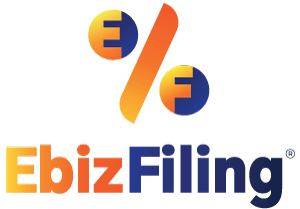
-
November 4, 2025
-
ByDhruvi D
Expecting a Tax Refund but Got a Demand? Understand Your 143(1) Notice
Introduction
If you were expecting a refund after filing your Income Tax Return but instead got a demand notice, you’re not alone. This situation happens when the details in your return don’t fully match the Income Tax Department’s records.
The notice you receive is called an Intimation under Section 143(1). It is not a penalty or legal action, but an automated communication after system checks. In this blog, we’ll explain why a refund can turn into a demand, what Section 143(1) means, how to check your intimation, how it differs from Section 143(2), and how Ebizfiling can guide you through the process.
What is Section 143(1) and Why is it Important?
Section 143(1) intimation is a summary issued after automated checks. It compares your ITR with records like Form 26AS, AIS, and employer filings. It shows:
-
If your return was accepted,
-
Any corrections made,
-
Whether you get a refund, or
-
If you now owe tax.
This is the first official communication after filing. It is not a scrutiny notice, and you don’t need to explain unless a demand arises.
How is Section 143(1) Different from 143(2)?
|
Section |
Nature |
Purpose |
Action Required |
|
143(1) |
Automated intimation |
Checks ITR vs system records |
Review & respond only if mismatch/demand |
|
143(2) |
Scrutiny notice |
Officer examines return in detail |
Must reply with documents |
143(1) is routine and automated, while 143(2) indicates detailed manual scrutiny.
How to Download and Check Your Section 143(1) Intimation
-
Login – Go to Income Tax Portal and log in with PAN, password, and Captcha.
-
View Filed Returns – Click ‘e-File’ > ‘Income Tax Returns’ > ‘View Filed Returns’ and download the intimation.
-
Open PDF – Use your PAN (lowercase) + Date of Birth (DDMMYYYY) as password.
-
Review Comparison Table – Check “As provided by taxpayer” vs “As computed under 143(1)” for income, deductions, TDS, and final tax outcome.
What to Do If the Demand is Incorrect
-
Check Form 26AS and AIS: Ensure claimed TDS/advance tax appears.
-
Compare With ITR: Verify income and deductions filed.
-
Respond Online: Accept and pay demand, or disagree and respond with proof.
-
File Rectification (u/s 154): If the error was in your original ITR, file a rectification request online.
How Ebizfiling Helps With Income Tax Demand 143(1) ?
-
Step 1: Review – We analyze your 143(1) intimation, ITR, and supporting documents.
-
Step 2: Reconciliation – Compare with Form 26AS, AIS, and Form 16 to find mismatches.
-
Step 3: Corrective Action – File rectification, respond to demand, or assist with payment.
-
Step 4: Follow-Up – Handle all communication with the Income Tax Department until resolved.
With expert support, you save time, avoid mistakes, and ensure compliance
Conclusion
Getting an Income Tax Demand 143(1) instead of a refund may feel confusing, but in most cases, it’s just a data mismatch or missing entry. By carefully checking your intimation and taking the right action, you can fix it easily. If you’d rather not handle the process yourself, Ebizfiling can step in and resolve the demand quickly and professionally.
Suggested Read :
Understanding Intimation Notices: Section 143(1) Explained
Interpreting Income Tax Notices: Documents & Reply
How to Verify the Authenticity of Income Tax Notices
Types of Income Tax Notices Issued in India
FAQs
1. Is this demand final or can it be corrected?
No, the demand is not always final. It is generated by the system based on mismatches between your ITR and the department’s records. If it’s due to missing TDS entries, ignored deductions, or calculation errors, you can either respond online or file a rectification request to get it corrected.
2. How long do I have to respond?
You usually get 30 days from the date of receiving the intimation to respond. Ignoring it may mean the department considers the demand as accepted, which can lead to recovery action or adjustment against future refunds.
3. Will I still get my refund if the demand is corrected?
Yes, if you prove the demand was raised in error and the rectification is accepted, your refund will be released. For example, if your TDS was not reflected in Form 26AS but later updated, the refund will be processed after correction.
4. Can I ignore a small demand?
No, even a small demand should not be ignored. The Income Tax Department can add interest on unpaid amounts and adjust it against future refunds. Paying or resolving it quickly avoids unnecessary complications.
5. What if I don’t understand what’s wrong?
Many taxpayers struggle to read the comparison table in the 143(1) intimation. If you are unsure, consult a professional like Ebizfiling. We will review your intimation, match it with your Form 26AS/AIS, and tell you exactly where the mismatch lies.
6. What is the difference between 143(1) and 143(2)?
Section 143(1) is a computer-generated intimation that tells you whether your ITR matches the system data. Section 143(2) is a scrutiny notice issued by a tax officer if they want to examine your ITR in detail. The first one is routine, the second is more serious and requires you to submit proofs and documents.
7. How do I know if the demand is correct?
You need to compare the “As provided by taxpayer” and “As computed under 143(1)” columns in the intimation PDF. If your TDS is missing, deductions are reduced, or income is shown higher, check against your Form 26AS, AIS, and ITR. If the mismatch is genuine, the demand is correct; otherwise, you can challenge it.
8. Can I file rectification myself?
Yes, you can file a rectification request online under Section 154 of the Income Tax Act. However, many people make mistakes again while filing corrections. Professional assistance ensures accuracy and increases the chance of your request being accepted quickly.
9. What if I agree with the demand?
If after checking, you find the demand is valid, you should pay it online through the e-filing portal. Once payment is made, you should also submit a response stating “Demand paid” so that the case is closed in the system.
10. Can Ebizfiling handle this entire process for me?
Yes, Ebizfiling can manage everything from reviewing your intimation to filing rectifications, preparing responses, and coordinating with the department. This saves you from the technicalities and ensures your case is resolved without delay.
Income Tax Returns
File Your Income Tax Returns Easily with Expert Help from Ebizfiling!
About Ebizfiling -










January 10, 2026 By Dhruvi D
The Real Value of Opening a US Bank Account To begin with, Opening a US bank account often feels like a formal step in setting up a business. Many founders treat it as a box to tick after company […]
January 10, 2026 By Dhruvi D
Choosing the Right Payment Methods on Stripe for Your Business Introduction Accepting online payments is no longer just about collecting money. It affects how customers trust your business, how fast you receive funds, and how smoothly your operations run. For […]
January 10, 2026 By Steffy A
Sales Tax Registration Process in the US Introduction Sales tax registration is a mandatory compliance requirement only when a business has sales tax nexus in a US state. Since the United States follows a state-based tax system, businesses must […]